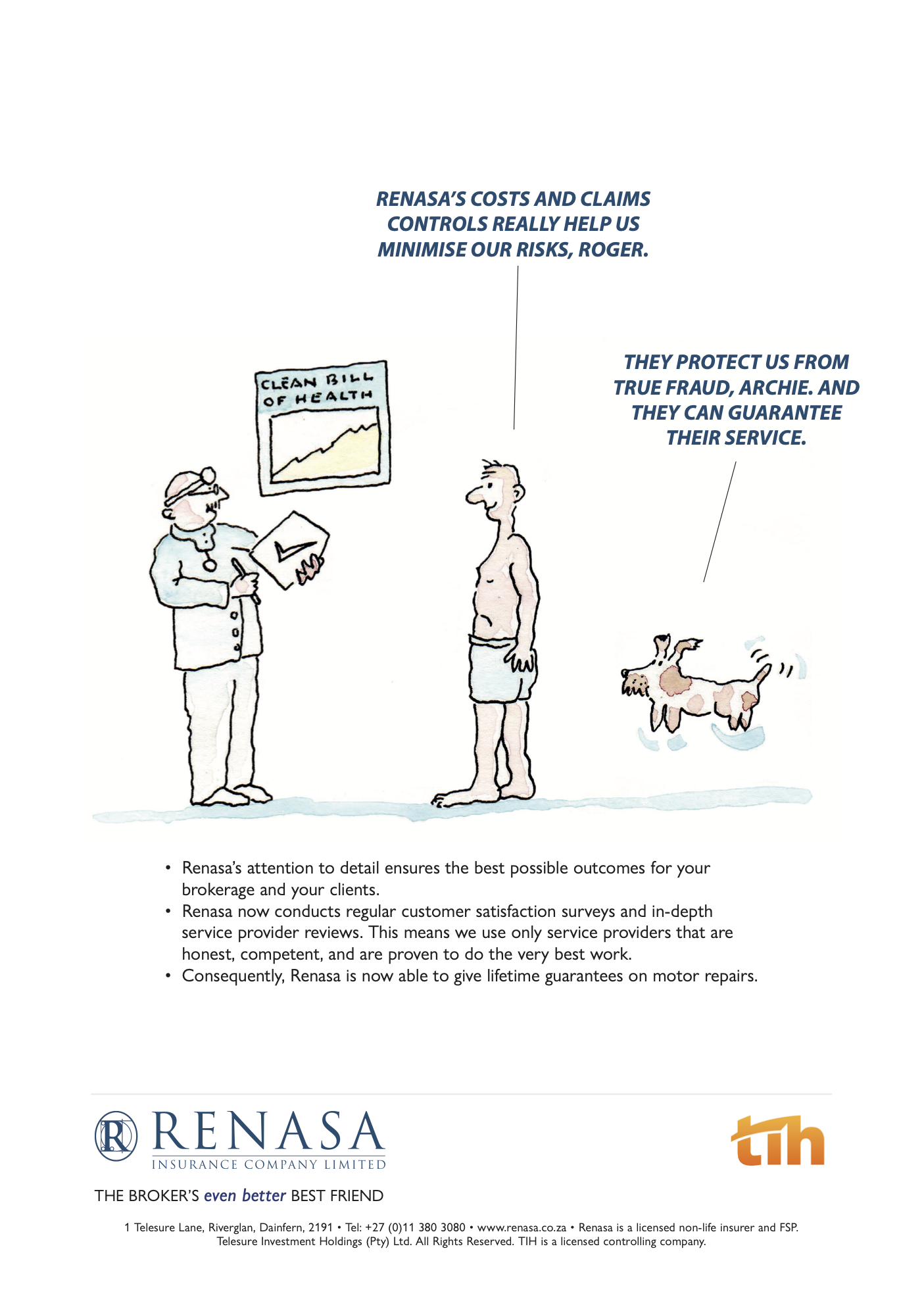Mike Mgodeli, Managing Director of RTUSA, in conversation with Tony Van Niekerk

Public transport and mobility are undergoing significant transformation in South Africa and across the globe. As demand for convenience, affordability, and accessibility grows, traditional transport models are being disrupted by technology-driven solutions such as e-hailing services, ride-sharing, and multimodal transport networks.
We explored how South Africa’s mobility landscape is changing, the challenges and opportunities within the public transport insurance sector, and the role brokers can play in this rapidly evolving industry.
The state of public transport in South Africa – The South African public transport system has long been dominated by minibus taxis, buses, and trains. However, as Mike points out, public transport inefficiencies, rising vehicle ownership costs, and changing consumer preferences have created a growing demand for alternative mobility solutions.
“Traditionally, we have come from a taxi-dominated transport environment, but we’re seeing significant changes. The biggest shift is the demand for on-demand, personalised transport services, which has led to the rise of e-hailing,” says Mike.
Interestingly, new mobility experiments are also emerging. One notable pilot project involves motorbike passenger transport, which aims to provide affordable last-mile connectivity in congested urban areas.
While transport competition has historically resulted in violence between taxi associations and e-hailing services, Mike highlights a shift towards collaboration. Many operators now recognise e-hailing as a complementary service, forming a multimodal transport network where passengers combine taxis and e-hailing services for greater convenience.
The growth of E-Hailing services – E-hailing has gained massive traction in South Africa, offering consumers a reliable and cost-effective alternative to traditional transport. However, insurance penetration in this sector remains low, with several structural challenges preventing widespread coverage.
Two key dynamics influence e-hailing insurance:
- Individual drivers and their access to insurance – Many drivers operate as independent contractors, meaning they must personally secure financing and insurance. However, because they lack formal banking history, they struggle to access financing and insurance at competitive rates.
- Fleet-based ownership models – Increasingly, rental companies and investors are purchasing vehicles in bulk and renting them to drivers, forming mini-fleets. These models bridge the gap by ensuring better regulatory compliance and structured insurance coverage.
“Insurance in this space is complex and often misunderstood,” Mike explains. “Most e-hailing platforms have strict compliance requirements for drivers, including professional driving permits (PDPs), vehicle checks, and background screenings. However, getting these drivers affordable and sustainable insurance coverage remains a challenge.”
How brokers can tap into the mobility insurance market – For brokers, mobility insurance represents a massive opportunity. As the industry shifts towards fleet ownership models, brokers can create tailored solutions that cater to transport entrepreneurs, fleet managers, and e-hailing companies.
However, individual driver insurance presents high policy churn rates. Many drivers sign up, fail to pay their first premium, and drop off the policy, leading to frequent cancellations. This challenge makes fleet insurance a more viable and stable business for brokers.
“Fleet owners understand the value of insurance because they operate at scale,” says Mike. “Unlike individual drivers, who may view insurance as an extra expense, fleet operators recognise it as a critical part of risk management.”
Brokers who specialise in this sector can add value by:
- Structuring insurance policies that align with fleet management needs
- Helping fleet owners navigate compliance requirements
- Advising on risk mitigation strategies to reduce accident frequency and claims
- Providing technology-driven insights, such as driver monitoring and telematics solutions
Innovations in mobility insurance – One of the most significant trends in mobility insurance is the shift towards long-term vehicle rentals. Instead of traditional five-year financing, many companies now offer short-term rentals ranging from 6 to 48 months.
However, the insurance industry has been slow to adapt to these changes. Historically, short-term vehicle rentals were seen as high-risk and were often self-managed by rental companies. This mindset is changing, with insurers recognising the growth potential in offering flexible coverage for rental fleets.
Mike believes the industry needs to rethink traditional insurance models to accommodate the changing landscape.
Our current insurance models are still very rigid and traditional, he explains. We need to think outside the box to structure insurance solutions that fit the needs of modern mobility players.
Re-evaluating risk in the mobility sector – Insuring public transport and e-hailing fleets requires a new approach to risk assessment. Traditionally, insurance pricing focused primarily on vehicle value and historical claims data. However, driver behaviour and asset management now play a far greater role in determining risk.

Renasa has always been the broker’s best friend.
Our entire business focus is exclusively on helping our intermediaries outcompete their competitors.
Now, as part of TIH, South Africa’s powerful insurance group,
we commit to do even more for our brokers.

RENASA’S COSTS AND CLAIMS CONTROLS REALLY HELP US MINIMISE OUR RISKS, ROGER.
- Renasa’s attention to detail ensures the best possible outcomes for your brokerage and your clients.
- Renasa now conducts regular customer satisfaction surveys and in-depth service provider reviews. This means we use only service providers that are honest, competent, and are proven to do the very best work.
- Consequently, Renasa is now able to give lifetime guarantees on motor repairs.
Renasa is a licensed non-life insurer and FSP. Telesure Investment Holdings (Pty) Ltd. All Rights Reserved. TIH is a licensed controlling company.
Mike highlights two critical risk factors in the mobility insurance space:
- Asset risk – The type of vehicle, maintenance costs, and spare part availability all affect long-term operating expenses. Brokers can advise fleet owners on vehicle selection, ensuring they purchase durable, cost-effective vehicles.
- Driver risk – The quality of drivers, driving behaviour, and compliance with safety protocols determine claim frequency. Advanced telematics and AI-driven driver scoring help fleet owners identify high-risk drivers and take corrective action before accidents occur.
Brokers and insurers must embrace technology to provide data-driven insights that help clients optimise operations and reduce risk exposure.
A future of opportunities for brokers – As public transport, e-hailing, and mobility services continue to expand, brokers who specialise in this sector stand to gain significant business. With the right expertise, partnerships, and innovative solutions, brokers can build long-term, profitable relationships in this rapidly growing space.
Mike emphasises that partnerships between brokers and insurers will be key to success.
We’re not just selling insurance policies; we’re helping businesses manage risk and operate more efficiently. The brokers who thrive in this space will be the ones who understand the unique dynamics of mobility insurance and work closely with insurers to develop tailored solutions.
The mobility sector is undergoing a massive transformation, with new transport models, digital disruption, and evolving consumer behaviours reshaping the industry. Brokers have a unique opportunity to capitalise on this shift by offering specialised insurance solutions that cater to fleet operators, rental companies, and e-hailing entrepreneurs.
As the demand for flexible, cost-effective transport solutions grows, insurance must evolve to meet these needs. Brokers who embrace innovation, technology, and data-driven risk management will position themselves at the forefront of the mobility insurance revolution.
South Africa’s transportation future is shifting—and the insurance industry must shift with it.

